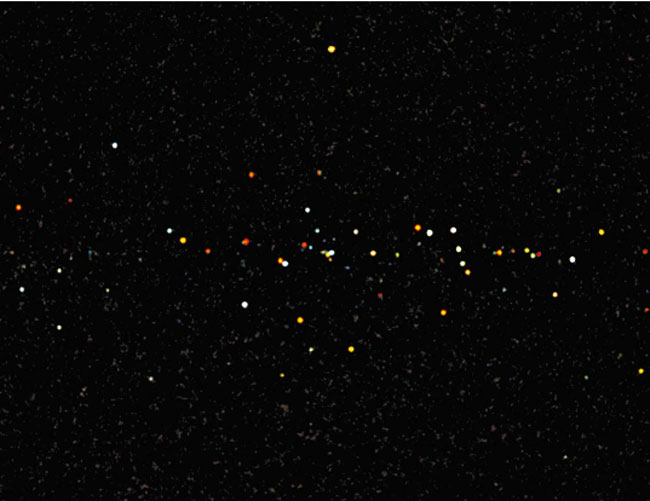
A new censuscompiled by astronomers contains the location of every local galaxy with a supermassive black hole at its center.
"Weare confident we are seeing every, active supermassiveblack hole within 400-million-light-years of Earth," said Jack Tueller of NASA Goddard Space Flight Center in Maryland who led thecensus effort.
Called activegalactic nuclei, or AGN, these black holes have masses of up to billions ofSuns compressed into a region about the size of our solar system. The all-skycensus [image],performed using NASA's Swift satellite over a nine-month period, detected morethan 200 nearby AGN.
Supermassive black holes are thought to lie at the hearts of nearly every massive galaxy, but only a few percent appearto be active. The black holes ofsome galaxies, like our Milky Way,were likely once active but are now dormant for reasons that are still unclear.One idea is that they've simply consumed all the material in their immediatevicinities. Such dormant supermassive black holeswere not counted in the survey.
Among thekey findings from the survey [image]was the detection of AGN in so-called "starbursts"galaxies with intense star forming activity. These discoveries will enablescientists to test a theory called "co-evolution,"which states that black hole activity and star formation go hand in hand, theresearchers say.
Thefindings were presented at a press conference today at the meeting of theAmerican Astronomical Society's High Energy Astrophysics Division in San Francisco.
- Journey to the Black Hole
- Top 10 Strangest Things in Space
- New Twists on the Milky Way's Big Black Hole
- Surprising Second Black Hole Found in Milky Way's Center
Get the Space.com Newsletter
Breaking space news, the latest updates on rocket launches, skywatching events and more!
Join our Space Forums to keep talking space on the latest missions, night sky and more! And if you have a news tip, correction or comment, let us know at: community@space.com.
Ker Than is a science writer and children's book author who joined Space.com as a Staff Writer from 2005 to 2007. Ker covered astronomy and human spaceflight while at Space.com, including space shuttle launches, and has authored three science books for kids about earthquakes, stars and black holes. Ker's work has also appeared in National Geographic, Nature News, New Scientist and Sky & Telescope, among others. He earned a bachelor's degree in biology from UC Irvine and a master's degree in science journalism from New York University. Ker is currently the Director of Science Communications at Stanford University.









